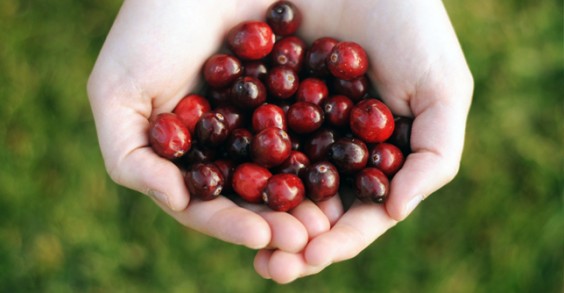Choosing the right cooking oil is of vital importance as this choice directly affects your health. Bad dietary fats can prove to be really bad for your health. They can cause inflammation which leads to arthritic aches and pains, heart disease, type II diabetes, cancer and other degenerative conditions. Good dietary fats on the other hand can reduce inflammation and reduce your risk of developing heart disease, rheumatoid arthritis, joint pain, Type II diabetes, metabolic disorder, make your skin glow and improve your immune system.
But before we talk about good fats and bad fats we need to know what these fats are all about. Fats are one of the four macronutrients required to maintain health, the other three being proteins, carbohydrates and water. Fats are solid at room temperature and oils are liquid at room temperature. Both fats and oils are made up of building blocks called fatty acids.
Saturated fats :-
These fats are solid at room temperature. Most non vegetarian food (meats, chicken, eggs, organ meat), milk products (butter, ghee, cheese) and oil from coconut and palm contain saturated fats. A diet high in saturated fats stimulates the liver to make the bad LDL cholesterol (low density lipoprotein) and VLDL (very low density lipoprotein). These have a tendency to increase stickiness of the blood and also increase clot formation. Saturated fats increase total cholesterol. The dietary cholesterol goes to the liver, where it merges with the cholesterol manufactured by the liver. It is then transported from the liver to the cells of the body via LDL which ‘carries’ the cholesterol on its back and ferries it across the blood stream and delivers it to the cells that need it. If a cell has enough it does not ‘accept’ more. The excess LDL stays in the blood where the cholesterol is deposited in the arteries causing them to narrow with plaque formation. The more saturated fat you eat and the lesser you exercise, the narrower your arteries become! Eventually the blood supply to the organ is reduced. That is why LDL and VLDL are known as bad cholesterol.
Poly unsaturated fats :-
These are unsaturated fats found mainly in nuts, seeds and oils extracted from plants sources. Corn, soyabean, safflower, sunflower seeds etc have PUFA. These fats help lower the bad cholesterol (LDL) but at the same time also lower the good cholesterol (HDL) which is undesirable. Furthermore these poly unsaturated oils oxidize faster than monounsaturated and saturated fats. Therefore excess intake of these oils could increase free radical formation in the body thereby increasing risk of arthritis, risk of certain cancers, metabolic disorders and contribute to the ageing process. Therefore excess intake of PUFA oils is not recommended.
Mono unsaturated fats(MUFA):-
Mono unsaturated fats are found in olives, avocados, mustard seeds, ground nut, rice bran, sesame seeds, macadamia nuts. These fats are stable (means they do not oxidize easily), they lower bad cholesterol (LDL) and do not lower the good cholesterol (HDL). Therefore these are beneficial for health.
Hydrogenated fats & Trans fatty acids( TFA’s):-
TFA’s are formed during the process of hydrogenation, when making cooking oil, margarine and vegetable shortenings. They are also found in trace amounts in some animal products like pork, beef, lamb, butter and milk. They are found in higher quantities in biscuits, cookies, white bread and most fast foods made with shortening and vanaspati . Trans fats raise the bad LDL cholesterol levels and lower the good HDL cholesterol levels. This obviously increases the risk of heart disease. It is advisable to keep trans fats intake to less than 1% of total calories, for e.g: If you are following a 2000 calorie diet, you should consume less than 2 grams of trans fats in a day. But just to give you an idea, a serving of large French fries contains as much as 6 grams of trans fats. It is advisable to reduce consumption of trans fats in your diet to trace amounts, as far as possible. Most saturated fats, trans fats and dietary cholesterol can raise LDL cholesterol & total cholesterol. Therefore replacing saturated fats, and trans fats with mono unsaturated fats and poly unsaturated fats can help lower total cholesterol and LDL cholesterol when taken along with a healthy diet and lifestyle. In order to judge any oils as healthy, there are three parameters required:
- Ratio of SFA/ MUFA/PUFA
- Ratio of omega 6/ omega 3
- Presence of antioxidants.
The American Heart association (AHA) recommends using oils having an almost equal proportion of saturated, monounsaturated and polyunsaturated fats in it. The NIN( National Institute of Nutrition) and the ICMR( Indian Council of Medical Research) also recommend a near equal ratio of SFA( 27-33%): MUFA( 33-40%): PUFA(27-33%) in a healthy oil. Rice Bran oil is closest to this recommendation. Its percentages being SFA (24%): MUFA (42%): PUFA (34%). It has a balanced fatty acid profile, has some amount of omega 3 fats, and contains good amount of natural antioxidants namely oryzanol, tocotrienol, tocopherol and squalene. It is therefore reassuring to know that finally there is an oil which can deal with your cholesterol effectively.
What’s special about Fortune Rice Bran Health Oil? :-
There are many varieties of oil that line the shelves of super markets. So then why should we switch to Fortune Rice Bran Health Oil? The answer is simple:
- Fortune Rice Bran Health Oil contains the right amount of oryzanol (antioxidant) to provide cholesterol lowering properties. It reduces cholesterol formation and absorption thus reducing blood cholesterol, also reducing blood clotting by retarding platelets aggregation (thus lowering possibility of heart attack) and increases cholesterol excretion thus reducing total cholesterol effectively.
- When you eat a low carbohydrate diet cooked in Fortune rice Bran Health Oil, it also helps reduce triglycerides (a kind of blood fat), reduces the bad cholesterol (LDL) and improves the good cholesterol to bad cholesterol ratio (HDL/LDL) which is very important for heart health.
- Rice Bran Oil has a balanced fatty acid profile close to the World Health Organization (WHO), American heart association’s (AHA), the National institute of Nutrition (NIN) and the Indian Council of medical research (ICMR) recommendation.
- Rice Bran Oil has more antioxidants (like oryzanol, tocotrienol, tocopherol, squalene) as compared to other cooking oils. This essentially results in health benefits like :-
- Better Skin :- Squalene softens the skin as it is a natural moisturizer . This effectively helps delay wrinkle formation and protects the skin from sun damage and maintains a healthy skin tone.
- Enhances the immune system :- Due to its high antioxidant content, it fights the free radicals that harm the immune system thereby protecting the body from disease. Besides benefiting the lipid profile, oryzanol also has anti dandruff and anti ageing properties.
- Helps prevent cancer :- Rice Bran Oil is rich in tocopherol and tocotrienols (vitamin E) which are powerful antioxidants. These are anti-mutagenic elements that curb the cancer causing free radicals thereby reducing cancer risk. Until recent times the health aspects of Rice bran oil have not been adequately highlighted. It is important for people to know that rice bran oil has not only cholesterol lowering properties but also has anti viral, anti itching and anti cancer effects.
- Nervous system and endocrine health :- The antioxidants found in Rice Bran Oil also benefits the nervous system. Vitamin E helps improve neurological functioning and balances the endocrine hormones.
The best thing about Rice Bran Oil is that it retains antioxidant stability even at high temperatures. It has a high smoking point of 254°C. The usual frying temperatures are between 180°C- 190°C. Rice Bran Oil remains stable upto more than 250°C. So it has a high heat stability which is important when you are looking for a healthy cooking oil. High temperatures are known to produce mutagenic elements in edible oils as well as in the food that you cook in it. But this is not the case with Rice Bran Oil. It does not breakdown into toxic compound under high heat. Rice Bran Oil is less viscous so it does not stick to the food – which means that the food absorbs less oil which in turn reduces the oil content and the caloric value of the food making it healthier.
It is a known fact that food cooked at high temperatures absorbs less oil. Since Fortune Rice Bran Health Oil is heat stable, one can cook at high temperatures (if needed) without having to worry about decomposition of the oil. This allows less oil to be absorbed by the food. Thus making it lesser in calories and therefore beneficial for your waist line and health in general.
Taste Matters :-
Apart from Fortune Rice Bran Health Oil being 100% Rice Bran oil and having the right amount of oryzanol, unique micronutrients and natural antioxidants; food cooked in Fortune Rice Bran Health Oil also tastes very good!. It has a light and neutral flavor, compatible with both, low heat as well as high heat cooking. Therefore it is no surprise that rice bran oil is fast becoming ‘the best choice’ as a healthy cooking medium in most kitchens in Japan, Korea, China, Taiwan, Thailand and now in India.
In the last decade there have been many studies that document that Indians are particularly susceptible to heart disease. This is because we are genetically prone to hyperlipidemia which is a major risk factor for heart disease. Due to this, considerable attention should be given to the quality as well as quantity of oil in the diet. The National Institute of Nutrition and The Indian Council of Medical Research recommends using oils having an almost equal proportion of Saturated fatty acids/ monounsaturated/ poly unsaturated fats in it. Since rice bran oil has a fatty acids profile closest to this ratio, loads of antioxidants and a high smoking point, it is highly recommended as a healthy cooking oil in the Indian context. However we all know that ‘moderation is the key to good health’. Therefore just like any other oil – its use is recommended in moderate amounts. NIN recommends 25 gm per day of oils and fats for adults with sedentary lifestyle while for individuals involved in hard physical work require 30 to 40 gm oils and fats. Diets of young children and adolescents should contain 30 to 50 gm per day of oils and fats.







 Photo: Caitlin Covington
Photo: Caitlin Covington
 Photo: Rhino Neal
Photo: Rhino Neal Photo: Caitlin Covington
Photo: Caitlin Covington Photo: jonycunha
Photo: jonycunha Photo: Caitlin Covington
Photo: Caitlin Covington

 Photo: sweetbeetandgreenbean
Photo: sweetbeetandgreenbean
 Photo: jefferysclark
Photo: jefferysclark Photo: timsackton
Photo: timsackton Photo: h-bomb
Photo: h-bomb Photo: Wally Hartshorn
Photo: Wally Hartshorn